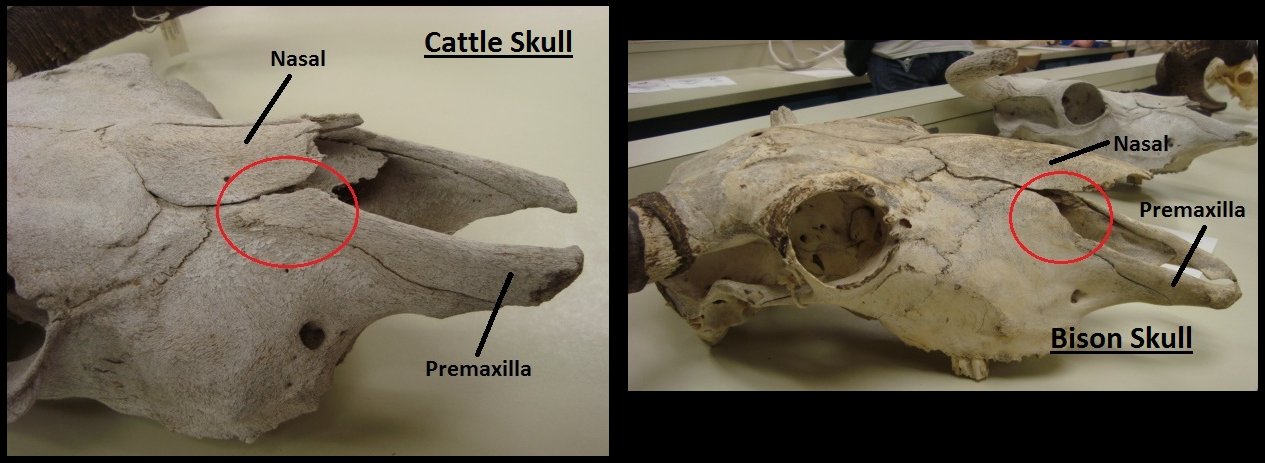Announcement
Collapse
No announcement yet.
estimate age and rarity?
Collapse
X
-
Nice Skull! Heres a link about Bison Antiquus.
http://us.yhs4.search.yahoo.com/r/_ylt=A0oG7pKXu8tSIS4AuH4PxQt.;_ylu=X3oDMTBybnZlZnR lBHNlYwNzcgRwb3MDMQRjb2xvA2FjMgR2dGlkAw--/SIG=11v92b956/EXP=138911
I see there was more than just 2 species so maybe even older than antiquus?
Bison antiquus, sometimes called the "ancient bison", was the most common large herbivore of the North American continent for over ten thousand years, and is a direct ancestor of the living American bison.
During the later Pleistocene Epoch, between 240,000 and 220,000 years ago,[3][4][5] steppe wisent (Bison priscus), migrated from Siberia into Alaska. This species inhabited parts of northern North America throughout the remainder of the Pleistocene. In midcontinent North America, however, B. priscus was replaced by the long-horned bison, Bison latifrons, and somewhat later by Bison antiquus. The larger B. latifrons appears to have died out by about 20,000 years ago. In contrast, B. antiquus became increasingly abundant in parts of midcontinent North America from 18,000 ya until about 10,000 ya,[4] after which the species appears to have given rise to the living species, Bison bison.[6] B. antiquus is the most commonly recovered large mammalian herbivore from the La Brea tar pits
Comment
-
Definitely a bison/buffalo skull. When the water levels are low in the rivers around here I can go out and find a dozen or more a day that look just like it, and there haven't been buffalo anywhere around here in probably a hundred years. being kept away from the air seems to preserve them for quite some time. The thing I found with them is generally that within a year or two of having been pulled from the river they turn extremely soft/brittle and start falling apart if not taken very good care of. I once found a complete skull, but they generally look exactly like the one you've posted.
Comment
-
My thought was both the same one from back one from front with better lighting. ? Curious to know are they the same skull?
TN formerly CT Visit our store http://stores.arrowheads.com/store.p...m-Trading-Post
Comment
-
There is no doubt about images being a front view and rear view of a skull(s), however rear view bison images generally give the horn cores the appearance of being larger than a frontal image; that is why I ask.Hoss wrote:
My thought was both the same one from back one from front with better lighting.
The front view (2nd image) is a male Bison Bison. It is a very nice specimen but I would not consider it as being rare.
The bison in my current avatar is a male Bison Occidentalis with a 32 inch horn core spread (extinct species).
Comment
-
Bison and cattle skulls can look awful similar. Generally, bison are more massively built than cattle, with a larger skull, but there can be considerable overlap in isolated skulls – dependent on size/age of animal and breed/species. Bison horns tend to be thicker at the base and curve more sharply upwards at the tip. If the horn sheath is still present, the horn core sometimes breaks through it near the tip in older bison, creating a blistered appearance.
The easiest and most reliable way to tell the difference between them (because it’s not dependent on size/age of animal) is by the arrangement of nasal and premaxilla on the rostrum (front) of the skull. That’s most easily judged by a side view rather than a top view.
The nasal bone is on the uppermost surface at the front of the skull. Below that are the premaxilla and maxilla (running laterally and ventrally respectively). These are jagged wedges of bone above the jaws at the front of the skull. In bison, the nasal and premaxilla are always well separated. There’s a significant gap. In cattle, the two bones normally touch, or very nearly touch. If there’s a gap, it’s small. These pictures demonstrate the difference:

[pics from ‘thewildside’ blog]
The premaxilla looks to be broken off in Brett’s skull (a side view – both sides – would help establish how much of it remains and whether a gap is discernible), so it’s inconclusive unless the skull dimensions take it outside the range for cattle but the rostrum looks broad enough to be bison. Jay’s skull shows the gap pretty clearly (even though the rostrum is much less broad) and would show it even more clearly in side view I think.
(PS: when we’re done here, I will move this thread to “Fossils, Paleontology -and- Old Bones”).
I keep six honest serving-men (they taught me all I knew); Their names are What and Why and When and How and Where and Who.
Comment






Comment